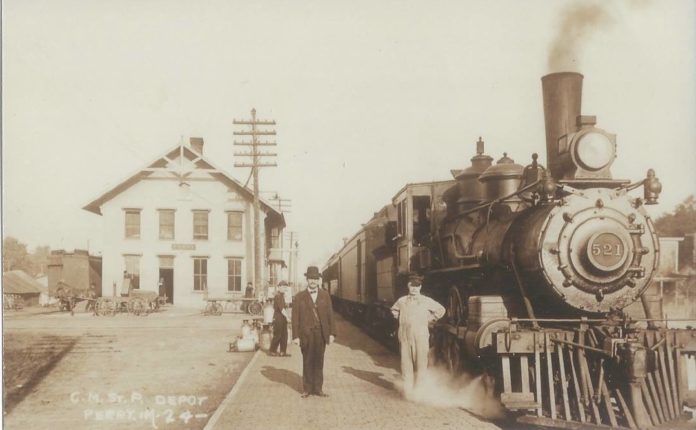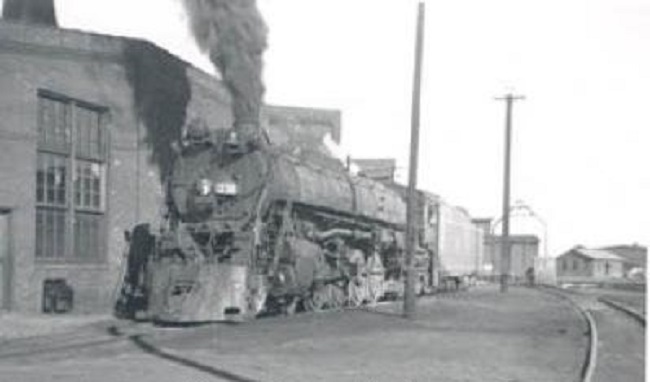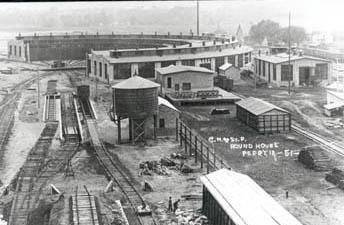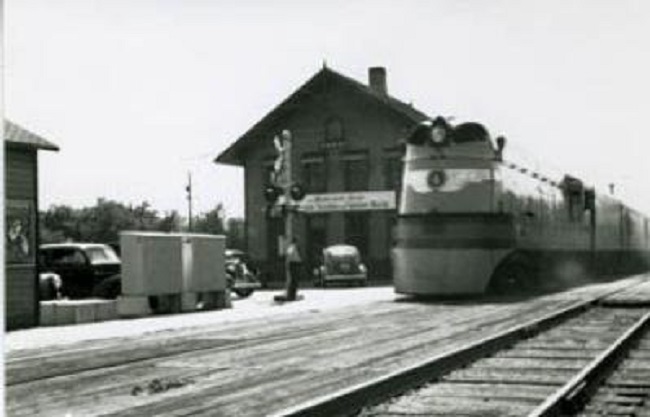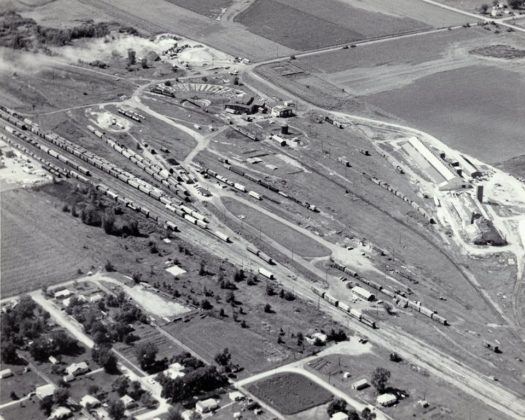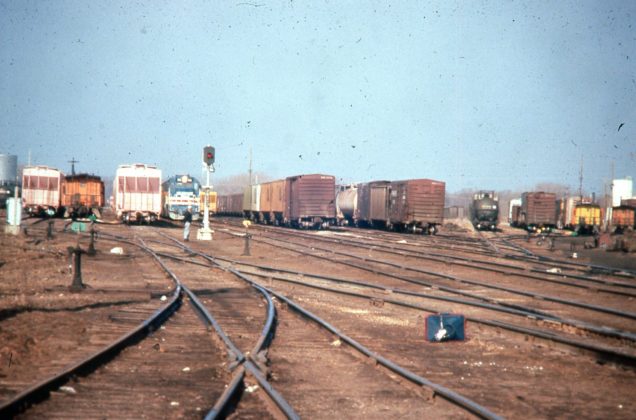In 1881 the first Milwaukee engine, No. 389, arrived in Perry, coming over the Chicago Northwestern to Grand Junction. Perry already had a north-south railroad in the Des Moines Valley line but wanted an east-west line, too, and made special efforts to see that the Chicago, Milwaukee and St. Paul line went though town instead of passing it.
By July 28, 1881, two miles of track were laid to the east, and work was started on the depot, which was the largest on the Iowa division. Not until Feb. 3 did they agree to locate the shops here, and a week later they got the Waldo tract of 20 acres.
By the close of November, the depot was done and tracks laid as far west as Bagley. The Des Moines River bridge was completed March 3 and the next day was running trains as far as Coon Rapids.
At 10 p.m. on June 30, the last spike was driven, opening the line to Council Bluffs. Ed Coltrin was the first to run on Milwaukee, pulling in from the bluffs just 18 minutes late.
The old round house, built of eastern Iowa stone, was a little east of Seventh Street. The stockyards were put up at 16th Street. The brick “flats” on Fourth Street were put up about this time, along with the Delands, who had a house near the round house, the Norton House near the depot, the Markress House as well as the Welch’s lunch room at Seventh and Rawson streets.
Also at this time the Milwaukee opened the Eagle Coal Mine in Angus. Eagle Mine built company housing and employed 75 miners. Eagle Mine put a shaft 100 feet down, hit coal at three to four feet thick and mined out 62 acres of coal and shipped it to Perry for their engines.
Much later, some of their company houses were sold off and moved to Perry. They are setting today along Park Street.
Change was coming for the Milwaukee, and in 1912 the company began a expansion program in Iowa. The line was double tracked, and a new bridge was built over the Des Moines River. The old round house facility was replaced with a new one that had a 30-stall round house, a “modern” coal shed, a 150,000-gallon water tank, machine shop, blacksmith shop and power house. All went into use at 6 a.m on Aug. 6, 1913.
In October 1935, fire did $300,000 worth of damage to the round house along and destroyed or damaged eight locomotives. After the fire was well under way, Harold Hass and Robert Smith took a switch engine and crashed through the doors to drag out two locomotives.
In 1937 a mammoth type of engine called the S-2 was put into service on freight trains. These were 110 feet with tender, about 12 feet wide and 16 feet high. By 1945, however, the new diesel engines were starting to take over. On Dec. 11, 1940, the Hiawatha began daily runs from Chicago to Omaha, and these would go on for about 15 years.
The Union Pacific had run their passenger trains on the northwestern tracks, but in 1955 change was made to the Milwaukee. Trains begin running Oct. 30, 1955. With only two stops across Iowa, many people came here to catch these fast trains going out west. The Arrow to Omaha made some stops at larger towns, but most towns had no passenger service at all.
Old steams engines began to pile up in the Perry yard, and in April 4, 1954, a long “funeral train” left Perry for Chicago. By about 1955, the changeover from steam to diesel was completed. The 20,000 gallon water tower east of the depot was taken down in 1952.
Perry at one time celebrated Railroad Weeks in the year before and after World War II, and in 1955 the Milwaukee began to run Cities trains through town. All the Cities trains stopped at Marion and Perry in both directions, going to Denver, Los Angeles and other western locales. It was common to see trains of 20 or more cars on streamliners.
Centralized traffic control (CTC) started on a 60-mile stretch between Council Bluffs and Manilla. Parts east were put in place not long afterward. Control of the system was moved to Perry in 1957, and doing that made Perry the controlling point for the Milwaukee’s longest section of CTC trackage.
Containers and freight were watched over by a computer at the railroad’s Chicago headquarters. The Boone-Clive line was abandoned in 1943 due to the cost of maintaining the high bridge. What was once a well-maintained, 115-pound rail, protected by CTC, is now a bike trail.



